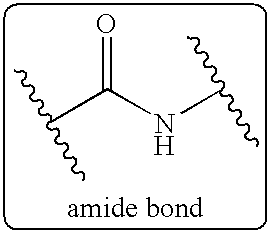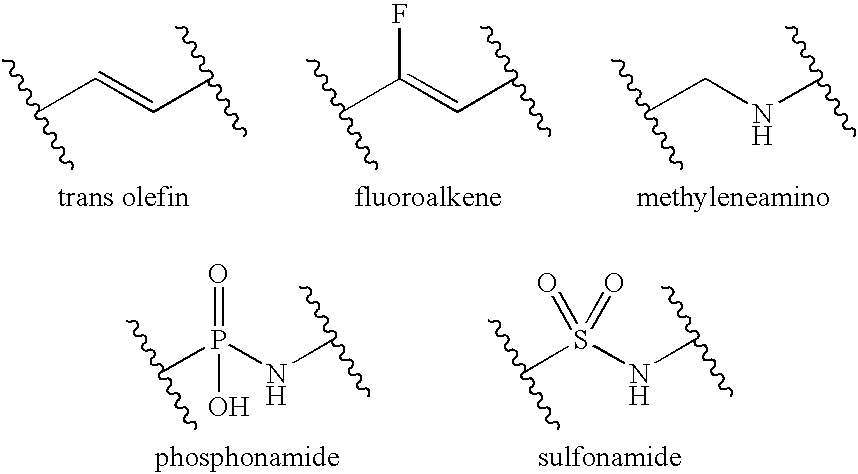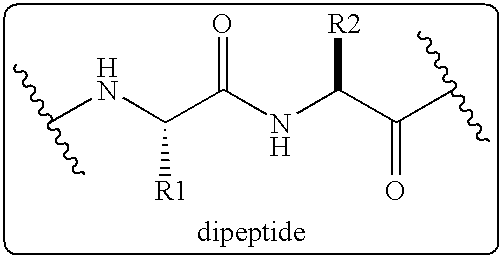Osteoporosis treatment
a technology for osteoporosis and treatment, applied in the field of osteoporosis treatment, can solve the problems of increased bone resorption and lack of desirable bone formation
- Summary
- Abstract
- Description
- Claims
- Application Information
AI Technical Summary
Benefits of technology
Problems solved by technology
Method used
Image
Examples
example 1
IL-11 Inhibits Bone Nodule Formation
The effect of IL-11 on bone formation was examined using the bone nodule formation assay. Murine calvaria cells (primary osteoblasts) were cultured in the presence of 250 .mu.M ascorbic add and 10 mM .beta.-glycerol phosphate, and in the presence of various amounts of interleukin-11. After culturing, the culture media were plated out and the number of bone nodules per plate was counted. The results are shown on the accompanying FIG. 5, where number of bone nodules per plate is plotted as the vertical axis, with the different concentrations of interleukin on the horizontal axis, not to scale. Each bar represents the result on experiments containing a different concentration of interleukin-11, as noted on FIG. 5.
It is clearly seen that the experiment conducted in the absence of interleukin-11 led to the highest number of bone nodules per plate, and that the number of bone nodules per plate decreased as the interleukin-1 1 concentration increased. Th...
example 2
Demonstration of the Ability of Anti-IL-11-Neutralizing Antibodies to Halt and to Reverse Bone Loss in Ovariectomized Animals
Twenty four laboratory mice were divided into four equal groups of six. Three of the groups were ovariectomized (OVX) while the fourth group was sham-operated (SHAM), to act as a control. One week after ovariectomization, treatment of one group of ovariectomized animals (OVX+Anti IL-11 Ab) with a daily dose of 160 .mu.g / mouse of anti-IL-11 Ab (an affinity-purified sheep anti-murine IL-11 polyclonal neutralizing antibody) commenced. At the same time, treatment of another group of ovariectomized animals (OVX+NSIgG) with the same daily dosage of normal sheep immunoglobulin (NSIgG) was commenced. Treatments were delivered once daily by intraperitoneal injection. Plasma analysis demonstrated that IgG entered the circulation of NSIgG group animals. Animals in the remaining two groups received no treatment.
On the day on which treatment was commenced, the sham-operate...
example 3
Preparation of Soluble Interleukin-11 Receptor That Inhibits IL-11 Induced Osteoclast Formation
cDNA encoding the IL-11 receptor (minus the transmembrane and cytoplasmic domains) was cloned by RT-PCR using IL-11 receptor specific primers and total RNA isolated from the human osteosarcoma cell line SAOS-2. Primer sequences were based on the DNA sequence for the human IL-11 receptor .alpha.-chain. The forward primer contains a Kozak consensus sequence preceding the start ATG codon, while the reverse primer contains, in addition to a termination codon, bases encoding a histidine tag. Both primers contain terminal restriction endonuclease sites for subsequent cloning into plasmid vectors. Authenticity of the cDNA insert encoding the soluble IL-11 receptor (cDNA depicted in SEQ ID NO 3) is confirmed by restriction endonuclease analysis and by double-stranded DNA sequencing using a modified T7 DNA polymerase system (Sequenase, Amersham).
For stable expression in mammalian cells, the IL-11R ...
PUM
| Property | Measurement | Unit |
|---|---|---|
| accessible surface areas | aaaaa | aaaaa |
| accessible surface areas | aaaaa | aaaaa |
| volumes | aaaaa | aaaaa |
Abstract
Description
Claims
Application Information
 Login to View More
Login to View More - R&D
- Intellectual Property
- Life Sciences
- Materials
- Tech Scout
- Unparalleled Data Quality
- Higher Quality Content
- 60% Fewer Hallucinations
Browse by: Latest US Patents, China's latest patents, Technical Efficacy Thesaurus, Application Domain, Technology Topic, Popular Technical Reports.
© 2025 PatSnap. All rights reserved.Legal|Privacy policy|Modern Slavery Act Transparency Statement|Sitemap|About US| Contact US: help@patsnap.com



